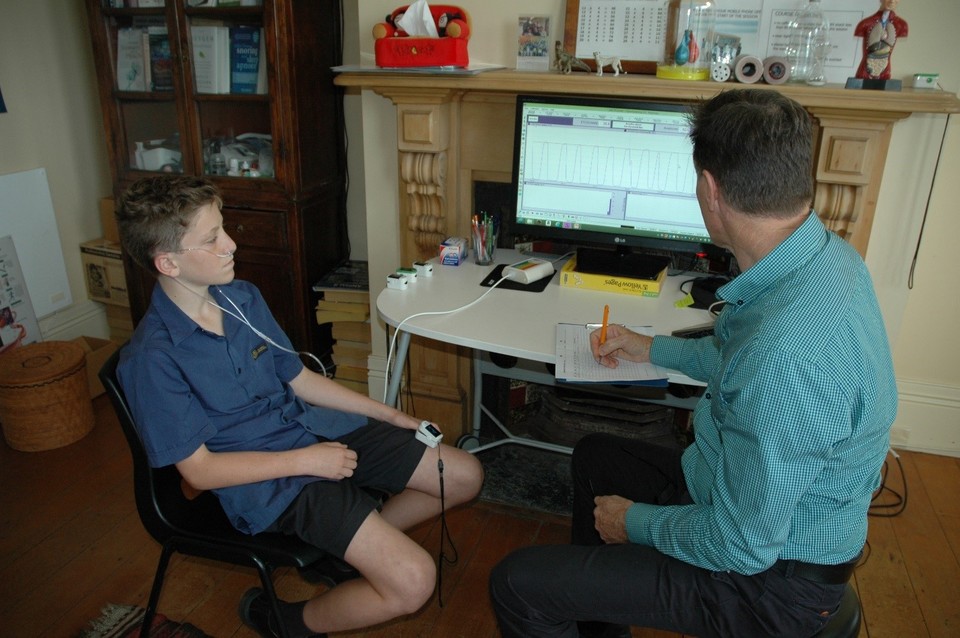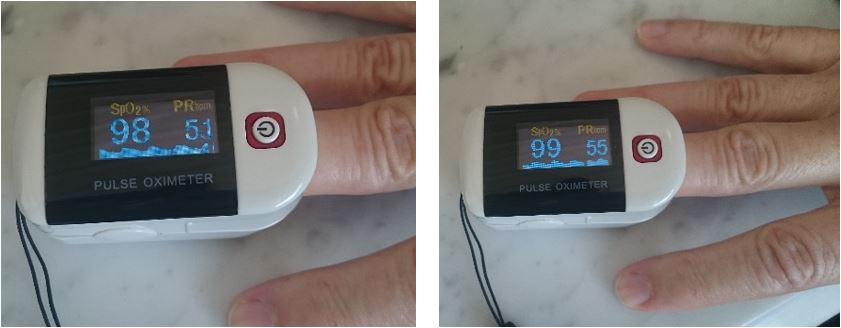In addition to parameters such as breathing rate and rhythm the capnometer measures end tidal carbon dioxide (EtCO2). EtCO2 is the percentage of CO2 in the exhaled air and gives an approximation of the concentration in blood. An optimal level of CO2 in arterial blood is vital for delivering oxygen to every cell in the body. If CO2 levels are too low this can starve the body of oxygen. This is due to the vaso and bronco dilating properties of CO2 and the Bohr Effect .
Lower than normal levels can contribute to a wide range of disorders including, but not limited to asthma, allergies, allergic rhinitis, sleep apnoea, panic attacks, anxiety disorders, migraine headaches and hypertension.
In pulse oximetry, a small sensor is attached to your finger. This measures the pulse and O2 saturation in peripheral blood. Combined, the two measurements of O2 and CO2 provide a near complete picture of breathing behaviour.
During an assessment your breathing may be tested in a variety of ways. This is so that we can establish how your breathing reacts to stimulus and if there is a breathing dysfunction. Dysfunctional breathing habits may be irregular breathing, like sighing or gasping, aborted breathing, deep inhales, among others. Some of these habits may only be detected using capnography.





